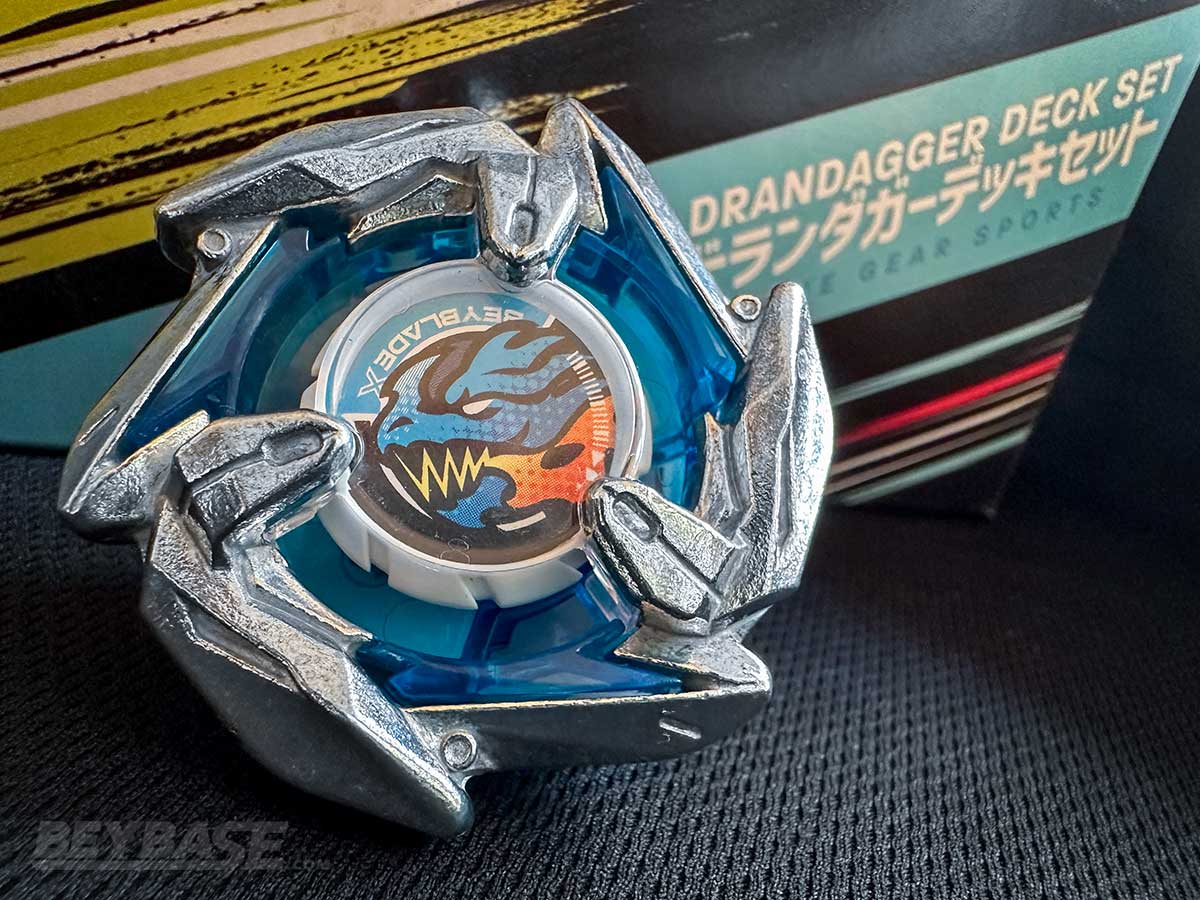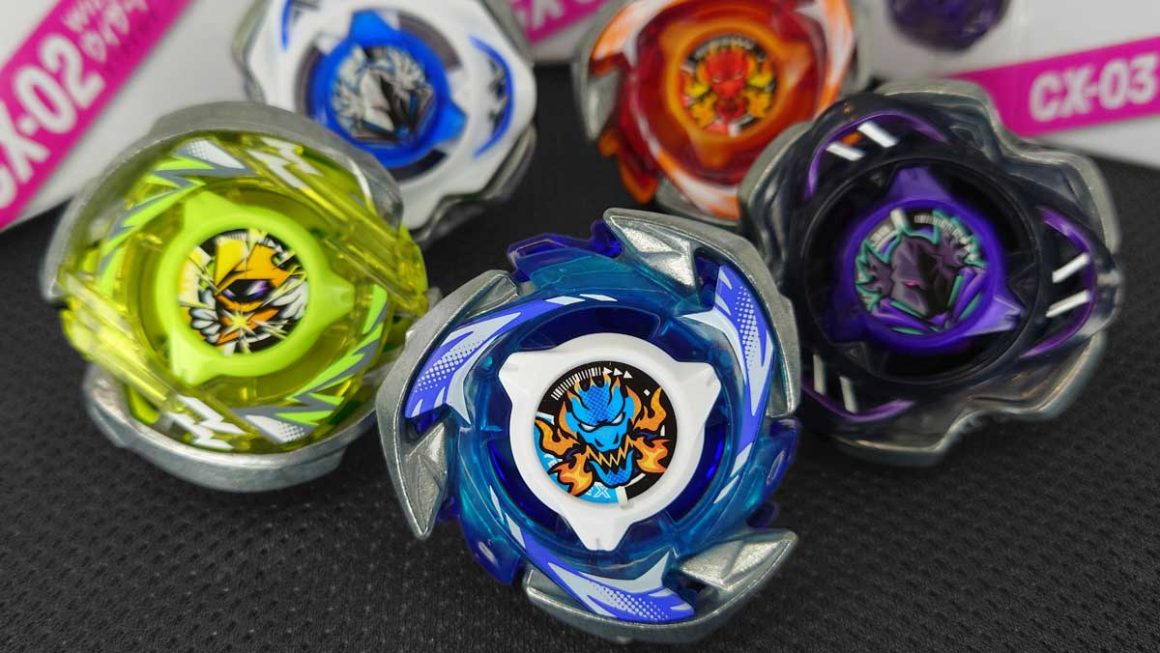Affiliate Disclosure: If you buy something through some of the links on this post, you won’t pay any extra, but we’ll get a small commission. This helps us keep things running. Thanks for your support!
The highlight of the simultaneous release of the BX-20 Dran Dagger Deck Set and BX-21 Hells Chain Deck Set is the introduction of a new pair of “Dran” and “Hells” permutations. They act as follow ups to the first two releases of Beyblade X: BX-01 Starter Dran Sword 3-60F and BX-02 Starter Hells Scythe 4-60T.
Rather than being a direct upgrade to an existing Beyblade, it seems that these releases are slight reimaginings that are meant to compete rather than replace, at least from a game balance perspective.
As a deck set, BX-20 comes with more than Dran Dagger 4-60R, but it is the main focus of this article. It is the only combo of the set containing never before seen parts. For information on the other contents of BX-20, namely Shark Edge 3-80F and Knight Shield 4-80T, head over to our Beyblade X Buyer’s Guide.
Given the tremendous power and tone set by Dran Sword early on, we have high hopes for Dran Dagger to do the same. Does it live up to its avatar’s name, or is Dagger going to come up short to Sword?
Summary
The stock Dran Dagger 4-60R combo alone can be as viable and potent as its predecessor, Dran Sword 3-60F. Every part complements one another well and makes for a formidable Attack combo right out of the box, while alone each part also has some serious value and can deepen a competitive players part pool tremendously.
The included Shark Edge 3-80F and Knight Shield 4-80T include a variety of competitive parts as well.
We definitely recommend picking BX-20 Dran Dagger Deck Set up.
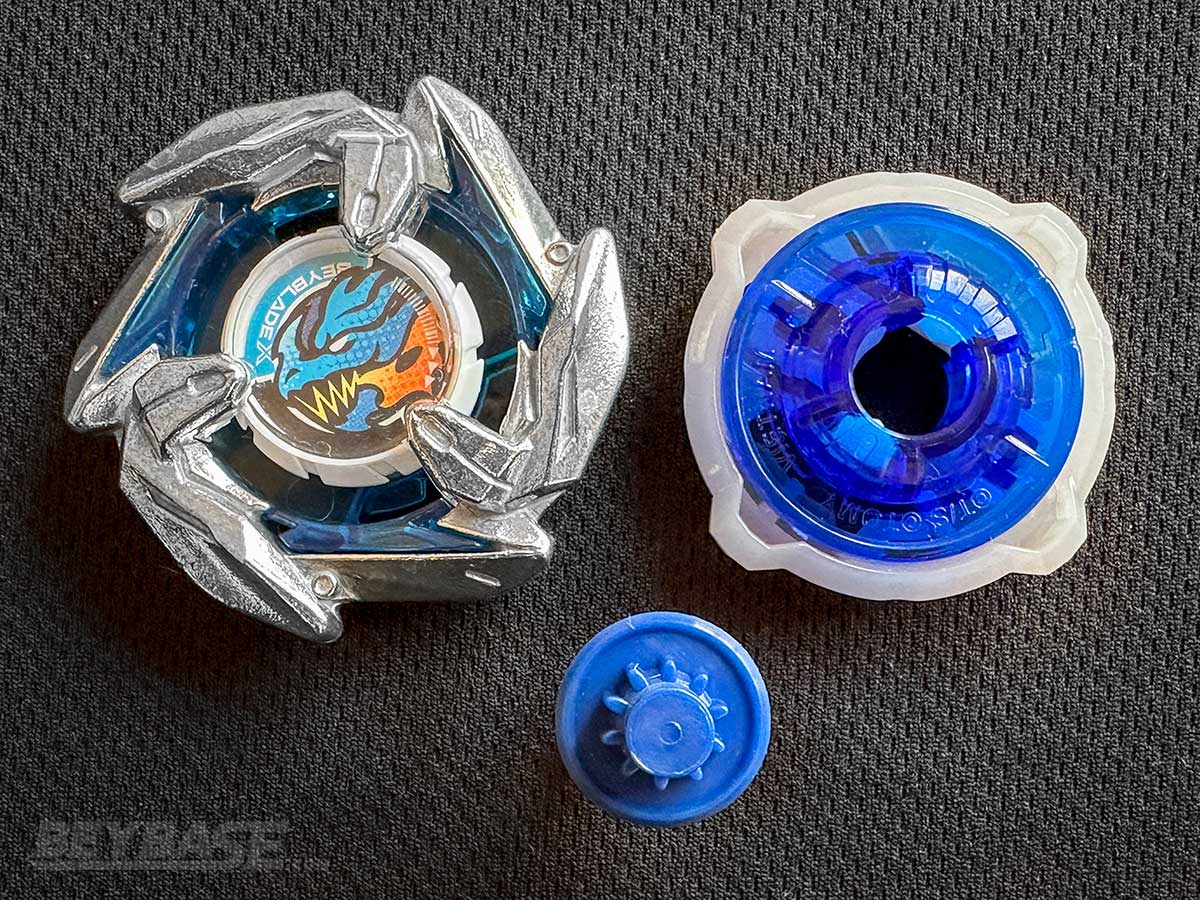
Parts Summary
Dran Dagger Blade:
Competent alternative to the Dran Sword Blade with much of the same use cases. Higher endurance, less oppressive Smash Attack, but more than enough to keep up. Read More.
4-60 Ratchet:
A re-release of an effective low-to-the-ground Ratchet. Good middle ground between lower recoil 3-60 and the heavy 5-60. Read More.
Rush Bit:
Slightly easier to control version of the Flat Bit, with seemingly a touch more endurance and comparable speed. Catches the Xtreme Line slightly more reliably and for a longer period than Flat or Low Flat. Read More.
Shark Edge 3-80F:
Shark Edge 3-80F is a shockingly generous stock combo, providing a lot of value to Bladers by making the RB Prize Shark Edge Blade more accessible and pairing it with great Attack parts.
Knight Shield 4-80T:
Knight Shield 4-80T is probably not many people’s reason for buying this set, but when viewed holistically this combo rounds the set out nicely by giving Bladers a decent answer to both of the other two combos here.
Where to Buy BX-20 Dran Dagger Deck Set
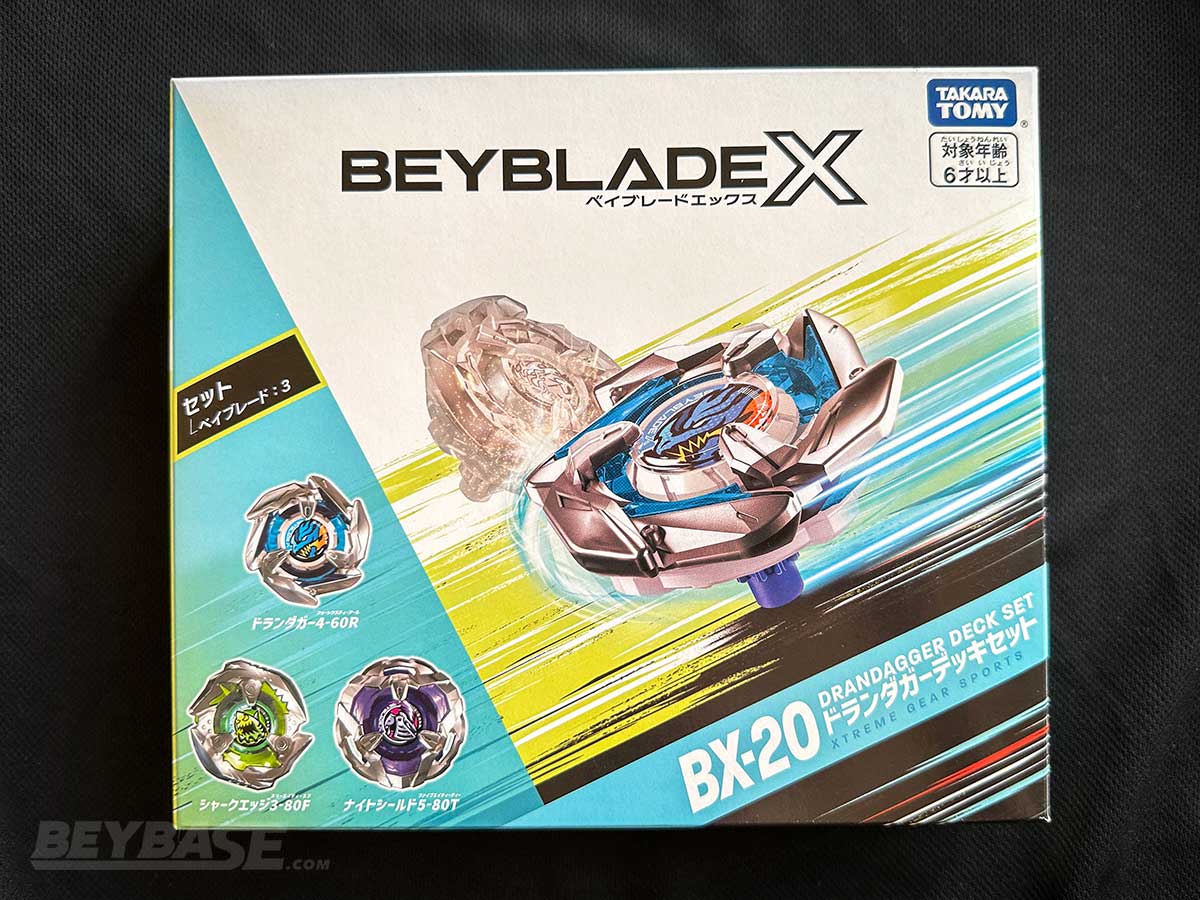
Heads up: If you buy something through some of the links on this post, you won’t pay any extra, but I’ll get a small commission. This helps me keep things running. Thanks for your support!

25 years. 4 generations. And we still don’t know: is Beyblade a sport? A toy?
I wrote a 100 page article to answer this question.

Sponsored: Order the newest Beyblades at malloftoys.com!
Heads up: If you buy something through Mall of Toys, you won’t pay any extra, but I’ll get a small commission. This helps me keep things running. Thanks for your support!
Product Details
- Brand: Takara-Tomy
- Product Code: BX-20
- Product Contents:
- Dran Dagger 4-60R
- Shark Edge 3-80F
- Knight Shield 4-80T
- Series: Beyblade X
Part Weights
- Dran Dagger Blade: 35.27g
- 4-60 Ratchet: 6.22g
- Rush Bit: 2.00g
Testing Method Notes:
- All tests in this article were done in the BX-10 Xtreme Stadium using two Bladers.
- Matches saw both combos switch out Ratchets and Bits at the half-way point to account for part performance variation, as well as side switching and Blader switching.
- Launch style was a basic hard launch parallel to the stadium unless specified otherwise.
Dran Dagger Blade Review
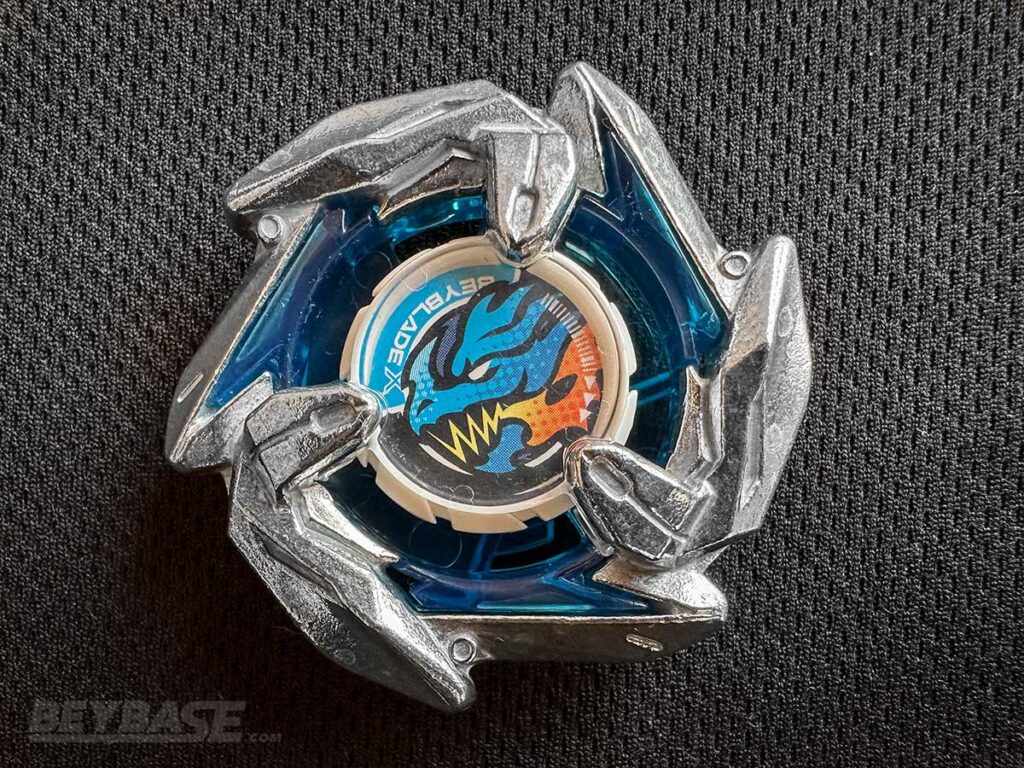
The Dran Dagger Blade is a six-sided Blade with very prominent points and edges. When compared to the Dran Sword Blade, it is as if the empty space between Dran Sword’s tri-wing design have been filled in with three additional contact points, making Dran Dagger.
As competitive Bladers we know that more isn’t always better, though. When it comes to Attack Beyblades that aim to propel opponents out with kinetic energy, having refined contact points that make clean and consistent contact with the opposing Beyblade is key. An overabundance of these points can, more often than not, get in the way rather than help deal decisive blows.
With that said, looks can be deceiving. Given the prominence of Dran Sword in the Attack category it is natural that we look there for Dagger’s home in the Beyblade X meta.
Is the Dran Dagger Blade good for Attack?
Despite its design leading one to believe it may be a bit more impotent than the design preceding it, Dran Dagger definitely has weight on its side, clocking in at the 35 gram mark, tying only with Dran Sword yet dwarfed by the Cobalt Drake Blade’s weight hovering around 38 grams.
This places the Dran Dagger Blade among the top three heaviest Blades released yet, and weight is an excellent attribute to have when relying on producing knock-outs as the primary win condition.
For our initial testing we started by putting it up against a very run-of-the-mill Stamina combo, using a worn Dran Sword as a benchmark:
Dran Dagger Blade Attack Testing
Dran Dagger Blade with Low Flat Bit Testing
Benchmark: Dran Sword 5-60LF vs. Hells Scythe 4-60B
- DS5-60LF wins: 8 wins, 19 points (3 XF, 3 KO, 2 BF)
- HS4-60B wins: 12 wins, 14 points (2 KO, 10 OS)
- Dran Sword Blade Win Percentage: 40%
- Dran Sword Blade Points Percentage: 58%
- Worn Dran Sword Blade, worn Hells Scythe Blade
Dran Dagger 5-60LF vs. Hells Scythe 4-60B
- DD5-60LF wins: 8 wins, 18 points (2 XF, 3 KO, 3 BF)
- HS4-60B wins: 2 wins, 2 points (2 OS)
- Dran Dagger Blade Win Percentage: 80%
- Dran Dagger Blade Points Percentage: 90%
- Mint Dran Dagger Blade, worn Hells Scythe Blade
It should be noted that the lacklustre performance by Dran Sword relative to Dagger comes down to wear state. It is well documented and understood that the efficacy of Dran Sword drastically decreases as its contact points wear down over use, rounding off a bit and losing some of its original aggressive edge.
At this point we cannot be sure that Dran Dagger doesn’t suffer from the same issue of wear heavily impacting performance, but if anything this may be one scenario where multiple contact points win out over fewer concentrated ones.
With promising results against a fairly common combo, it seemed appropriate to turn the difficulty up a notch for Dran Dagger. Rather than play a high-recoil mostly-passive opponent, we tried a number of low-recoil opponents, starting with Knight Shield:
Dran Dagger 5-60LF vs. Knight Shield 4-60HN
- DD5-60LF wins: 4 wins, 7 points (3 KO, 1 BF)
- KS4-60HN wins: 5 wins, 8 points (1 XF, 1 KO, 3 OS)
- Dran Dagger Blade Win Percentage: 44%
- Dran Dagger Blade Points Percentage: 47%
- 1 Draw
- Mint Dran Dagger Blade, worn Knight Shield Blade, mint HN Bit
Naturally things became a bit trickier against a dedicated Defense type Blade, though frankly these results are far from problematic. There is only a slight edge for the Knight Shield Blade here, so it is a perfectly winnable matchup for either Blader. It will come down to positioning, strategy, and some luck.
Next we tried Dran Dagger against a Knight Shield on an aggressive Bit, as it tends to be just as effective into Attack types if not more so than the likes of the High Needle Bit:
Dran Dagger 5-60LF vs. Knight Shield 4-60P
- DD5-60LF wins: 3 wins, 7 points (1 XF, 2 KO)
- KS4-60P wins: 7 wins, 10 points (1 XF, 2 KO, 3 OS)
- Dran Dagger Blade Win Percentage: 30%
- Dran Dagger Blade Points Percentage: 42%
- Mint Dran Dagger Blade, worn Knight Shield Blade, mint P Bit
This matchup felt similarly rough for Dran Dagger despite what the raw numbers show, because an aggressive and fast-moving Knight Shield can be both difficult to hit and difficult to secure knock-outs on. It is among the most challenging pure counters to Attack types that exist currently, whether on the Point Bit, Flat Bit, Low Flat Bit or Taper Bit.
Given Dran Dagger’s slightly inferior Smash Attack to the other two top Blades, Knight Shield becomes even more difficult to bully on an aggressive Bit. Similar to the previous Knight Shield matchup a lot will come down to positioning, strategy, and luck.
For attack enthusiasts that wish to rely on any of the mainstay Attack type Blades, not just Dran Dagger, attempting to master and improve this matchup is paramount to peak play and security.
Our last matchup for Dran Dagger was a bit of an unusual one, but important. We tried it against a docile and very low recoil opponent, the Wizard Arrow Blade.
Dran Dagger 5-60LF vs. Wizard Arrow 4-60HN
- DD5-60LF wins: 5 wins, 10 points (1 XF, 1 KO, 2 BF, 1 OS)
- WA4-60HN wins: 5 wins, 6 points (1 KO, 4 OS)
- Dran Dagger Blade Win Percentage: 50%
- Dran Dagger Blade Points Percentage: 62.5%
- Mint Dran Dagger Blade, worn Wizard Arrow Blade, Mint HN Bit
This last one was very interesting mostly because of the very last battle that resulted in a Wizard Arrow outspin. While initially it seemed much like the other rounds where Wizard Arrow had a decisive out-spin despite repeated hard assaults, when picking up the Wizard Arrow combo it fell apart at the Ratchet.
Currently our understanding of a Burst Finish hinges on “separation” of parts. Technically speaking the Wizard Arrow combo was no longer locked in place but there was no separation of parts until the match had concluded, so it should be the winner.
Despite Dran Dagger hitting Wizard Arrow’s Ratchet enough to release the locking mechanism as it did many times before, Arrow didn’t “separate”. In a way this radically changes the results, dramatically decreasing Dagger’s point win percentage at this sample size.
Apart from this anomaly it is clear that the Dran Dagger combo is in the driver’s seat for this matchup and while a docile Wizard Arrow isn’t dead in the water, it should certainly be sweating and hoping it can survive an all-out onslaught from Dagger. Wizard Arrow’s low-recoil nature isn’t enough.
Dran Dagger Blade Docile Bit Testing
Given the prominence of stationary attackers in Beyblade X, it made sense that we see how the Drag Dagger Blade performs on a docile Bit since all of our testing up until this point has been on traditional aggressive Bits:
Dran Dagger 5-60HN vs. Hells Scythe 4-60B
- DD5-60HN wins: 5 wins, 8 points (1 BF, 2 KO, 2 OS)
- HS4-60B wins: 5 wins, 7 points (1 BF, 1 KO, 3 OS)
- Dran Dagger Blade Win Percentage: 50%
- Dran Dagger Blade Points Percentage: 53%
- Additional Notes
Compared to how Dagger did in our first set of testing it is clear that putting the Blade on the HN Bit reduced its ability to score as frequent Knock-Outs and Xtreme Finishes.
The drop in performance was noticeable, but the upshot of using a docile Bit like High Needle is that you are less likely to self-KO in high pressure situations.
What these testings did highlight was something we were seeing all throughout testing: the Dran Dagger Blade has a nasty habit of securing Burst Finishes from below when tilted over.
Compared to the Dran Sword Blade its upward projections are not as tall, with Dran Dagger Blade’s angles being more sideways oriented instead. This means that direct contact with an opposing Ratchet, even while tilted, is more likely to be a smooth cleaving motion that stands a good chance at disassembling the opponent.
Our tests thus far have shown indirect comparison between the Dran Dagger Blade and its potential competition in the Attack Blade space. Instead now we will touch on a head-to-head comparison between the Dran Dagger Blade and its predecessor, Dran Sword Blade.
The Taper Bit is used because of its increased endurance, in the event a match does not end in a Knock-Out or Xtreme Finish we can better attempt to compare the innate endurance of each Blade.
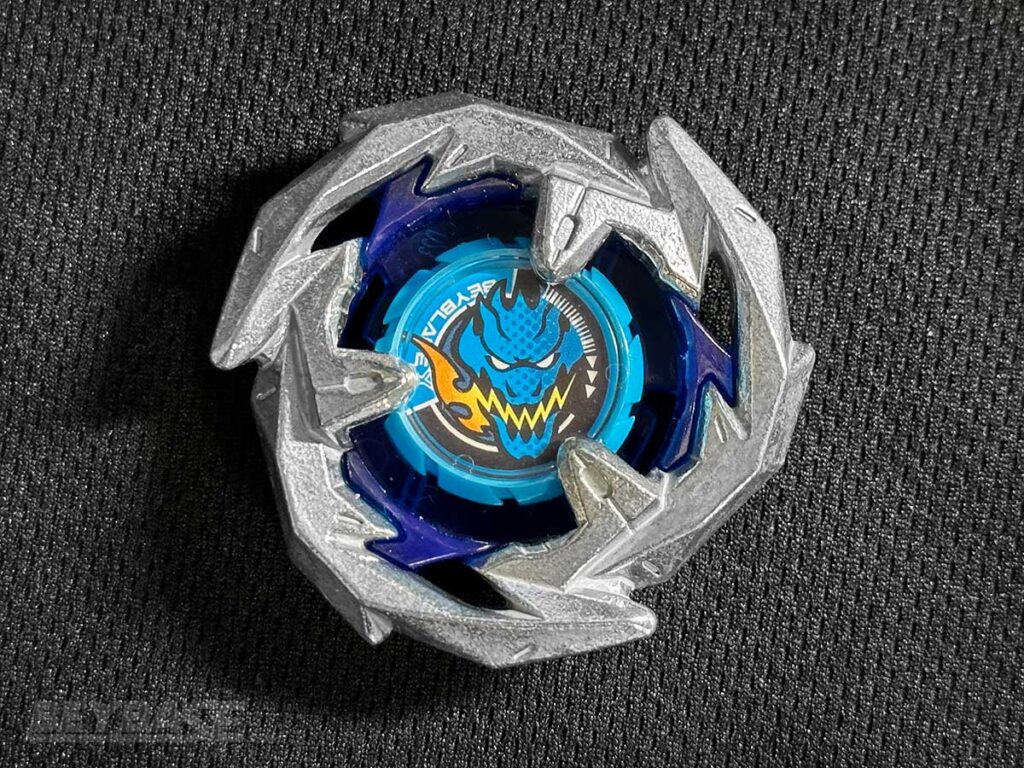
Dran Dagger 5-60T vs. Dran Sword 5-60T
- DD5-60T wins: 6 wins, 12 points (1 XF, 4 KO, 1 OS)
- DS5-60T wins: 4 wins, 6 points (2 KO, 2 OS)
- Dran Dagger Blade Win Percentage: 60%
- Dran Dagger Blade Points Percentage: 67%
- Mint Dran Dagger Blade, worn Dran Sword Blade, Mint Taper Bits
Here we saw a fairly haphazard matchup that went almost even in pure wins but majorly in favour of Dran Dagger Blade in points.
For one reason or another the Dran Dagger Blade felt a bit more likely to secure a Knock-Out whereas the Dran Sword Blade lacked the oomph required due to wear state. Conversely, the Dran Sword Blade felt a bit more safe when it came to securing Spin Finishes.
In the end these kinds of matchups and results should be taken with a grain of salt given the multitude of reasons why a specific match may go one way or another, including but not limited to launch style, unique player quirks, and component wear state.
The most we can ascertain from this matchup is that the Dran Dagger Blade is not in a clear disadvantageous spot against other Attackers in the mirror match and that it certainly performs better than a worn Dran Sword Blade here.
Dran Dagger Burst Finish Testing
As mentioned earlier we found that Dran Dagger Blade appeared to get more Burst Finishes and usually in a very uniform way, such as at an acute angle, be it at the beginning of the match via launch technique or at the end with low RPM and toppling over.
We decided to test this and see if Dran Dagger Blade’s Burst Finish propensity was just a case of luck or repeatable. We chose to do testing that involved both combos on a docile Bit prone to tilting (Needle and High Needle), the Chain Blade for its flat underside, and finally a low-high Ratchet matchup all to induce more Blade on Ratchet contact.
For comparison’s sake we chose to use a worn Dran Sword Blade. Both Dran Sword and Dran Dagger Blades were launched at an angle to improve their chances of first contact being with the opposing Ratchet.
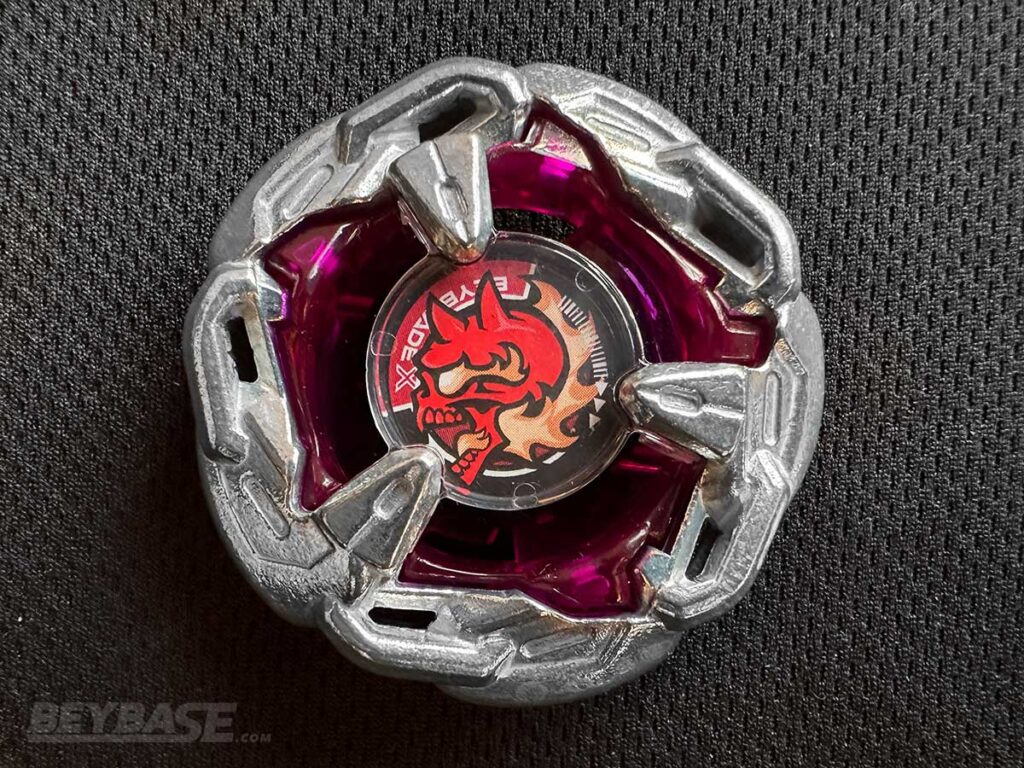
Dran Dagger 5-60N vs. Hells Chain 5-80HN
- DD5-60N wins: 6 wins, 12 points (3 BF, 3 KO)
- HC5-80HN wins: 4 wins, 4 points (4 OS)
- Dran Dagger Blade Win Percentage: 60%
- Dran Dagger Blade Burst Finish Percentage: 50%
- Dran Dagger launched at a tilt
Dran Sword 5-60N vs. Hells Chain 5-80HN
- DS5-60N wins: 3 wins (1 BF, 2 OS)
- HC5-80HN wins: 7 wins (1 BF, 6 OS)
- Dran Sword Blade Win Percentage: 30%
- Dran Sword Blade Burst Finish Percentage: 33%
- Dran Sword launched at a tilt
After these tests it became apparent that Dran Dagger Blade did indeed find more opportunities to dig into the opposing Ratchet and Burst Finish more frequently as a result.
While we didn’t expect a worn Dran Sword to perform better in terms of win percent, it should theoretically be just as likely or unlikely to make direct Ratchet contact as a mint one. In general Dran Sword Blade, because of its design, wasn’t able to make as meaningful contact with the opposing Ratchet.
With that said, it is also apparent that even a worn Dran Sword Blade has more innate endurance than a mint Dran Dagger, scoring out spins while Dran Dagger Blade was not able to secure even just one itself.
The Verdict
The Dran Dagger Blade is an excellent Attack Blade and third option for an all-Attack Deck. Dagger lacks some of the explosive power found in a mint Dran Sword or Shark Edge, but it doesn’t lag behind too much.
Dran Dagger has enough consistency to warrant consideration among stiff competition, and rest assured that if you have to pick between a worn down Dran Sword or a relatively mint Dran Dagger, the latter is a better choice overall.
4-60 Ratchet Review

The 4-60 Ratchet is a re-released Ratchet that has four protrusions and a 60mm height, rivaling both the 3-60 and 5-60 Ratchets in utility and performance. Anything that can be said about it has been said ad nauseam by this point: it is an excellent Ratchet that easily finds a place in any combo type or any Deck thanks to its great height. Read more about the 4-60 Ratchet in our review of BX-02 Starter Hells Scythe 4-60T.
Given the huge variance in Ratchet quality in terms of both tightness on a Blade and internally (compactness of Ratchet components), it is hard to say whether or not the 4-60 Ratchet found in the Dran Dagger Deck Set is markedly better or worse than any of the other numerous 4-60 releases.
It is far from being the purchase-deciding component in the Dran Dagger Deck set.
The Verdict
The 4-60 Ratchet is a must-have Ratchet for those wanting to build a shorter Deck, rounding out and complementing 3-60 and 5-60 Ratchets, but re-released often enough to not be a defining part of this set.

Sponsored: Order the newest Beyblades at malloftoys.com!
Heads up: If you buy something through Mall of Toys, you won’t pay any extra, but I’ll get a small commission. This helps me keep things running. Thanks for your support!
Rush Bit Review

The Rush Bit features a flat circular tip and 10 teeth on the gear surrounding its tip. This is very unique compared to its contemporaries design-wise, thanks to this unique gear shape as well as gear height. Until now, all Bits have featured the same gear design with 12 teeth.
Its closest relative is the Flat Bit, and compared to that its tip is slimmer in diameter, and features a untapered (shorter) and lower ratio Gear (10 teeth compared to 12). This means, in theory, it is able to build up speed a bit quicker than ‘normal’ Bits, hence its name.
How much stamina does the Rush Bit have?
With the Rush Bit’s tip being slightly narrower than the Flat Bit, it is natural to assume that it may have slightly better stamina than it. To confirm whether this hypothesis was true or not we conducted a few solo spin tests.
Ratchet orientation was switched a few times to ensure it wasn’t impacting the overall balance of the combination.
Wizard Arrow 3-60 Rush Solo Spin Time
- Ratchet Orientation 1: 0:42
- Ratchet Orientation 2: 0:42
- Ratchet Orientation 2: 0:42
Wizard Arrow 3-60 Flat Solo Spin Time
- Ratchet Orientation 1: 0:40
- Ratchet Orientation 1: 0:45
- Ratchet Orientation 2: 0:42
While Flat did have the best singular round, overall there was no discernible difference in the solo spin time between it and Rush.
That being said, it doesn’t mean there is no difference in their stamina potential.
Because the Rush Bit’s movement pattern is slightly less aggressive than Flat, it may suffer less effects from hitting walls throughout a battle. The gear surroundung the tip is also shorter than Flat, which could influence its ability to precess.
It therefore seems to have slightly more endurance at the end of actual battles. But there could be scenarios where the Flat Bit may be able to maintain its posture slightly longer and spin slightly longer at the end of a battle due to its slightly wider tip.
Ultimately, the stamina of the two Bits is likely comparable. We would give Rush the edge, but the outcome will depend not only on player strength but launching technique and the specific matchup.
How burst resistant is the Rush Bit?
On paper the Rush bit should have as much burst resistance as the Flat Bit since apart from the gear and tip design, the shaft that determines resistance remains the same. With that said, its potential increase in speed may have some impact on the Beyblade’s ability to stay together upon impact.
To test this out we compared how the two Bits did when on a very aggressive Attack combo knocking into a stationary opponent, seeing if one Bit was more likely than the other to Burst over the course of battle.
Here are the results of those tests, with a distinction being made between Burst Finishes and “Completed Matches” (matches that did not end with the F/R Bit Bursting)
Benchmark: Dran Sword 5-60F vs. Knight Shield 4-60HN
- Flat Bit Outcomes: 0 Burst, 10 Completions
- Flat Bit Burst Finish/Separation Percentage: 0%
Dran Sword 5-60R vs. Knight Shield 4-60HN
- Flat Bit Outcomes: 0 Burst, 10 Completions
- Flat Bit Burst Finish/Separation Percentage: 0%
Perhaps not coming as a surprise, there was no noticeable advantage in terms of Burst Resistance between either Bit.
While it did seem that the Rush Bit could build up speed around the Xtreme Line very quickly, the Flat Bit makes up for it by being much more aggressive on average when not on the Xtreme Line.
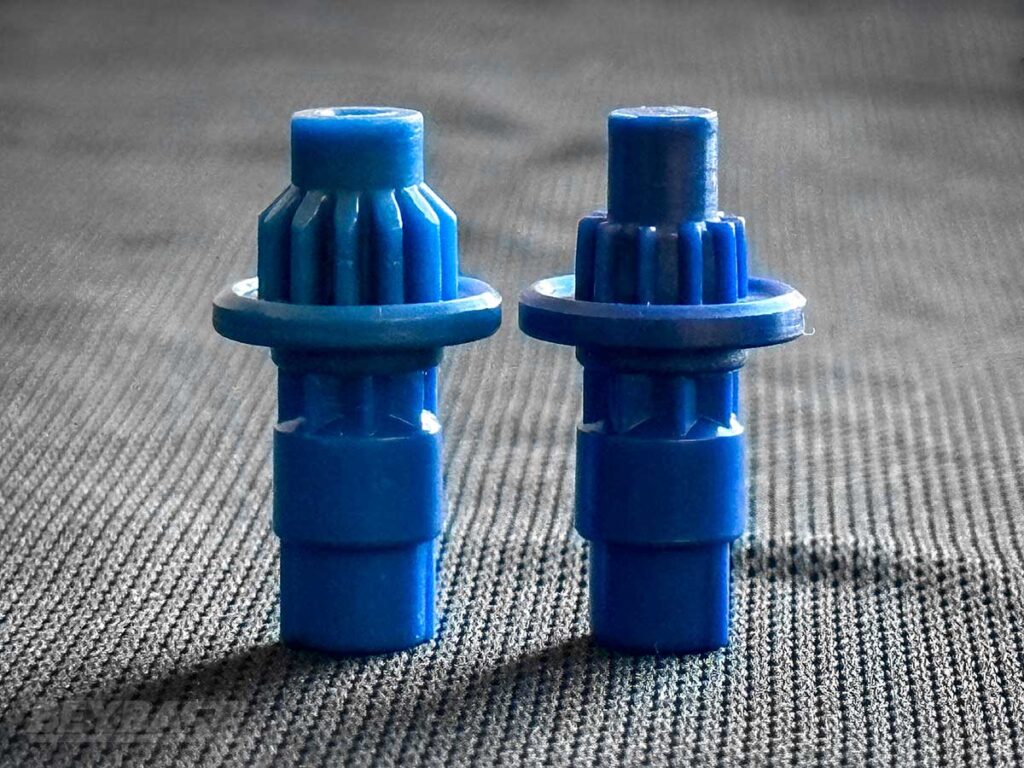
This makes it so there doesn’t seem to be a meaningful difference in average speed between the two throughout the course of a match, and the resistance allocated to the Flat Bit works fine on a Rush style Bit.
Is the Rush Bit good for Attack Combos?
From its initial testing and self-evident Attack design it is clear that the Rush Bit is intended to be used as an Attack oriented Bit. We noted that Rush seemed to have higher raw endurance than the Flat Bit as well as more control when not riding the Xtreme Line, so we had pretty high hopes it could keep up with the otherwise perfect Attack Bit.
Before we got into some general matchup testing we decided to start off with a very to-the-point Benchmark similar to the Burst Resistance benchmarks earlier, to see if Rush could compare to the Flat Bit:
Rush Bit Attack Testing
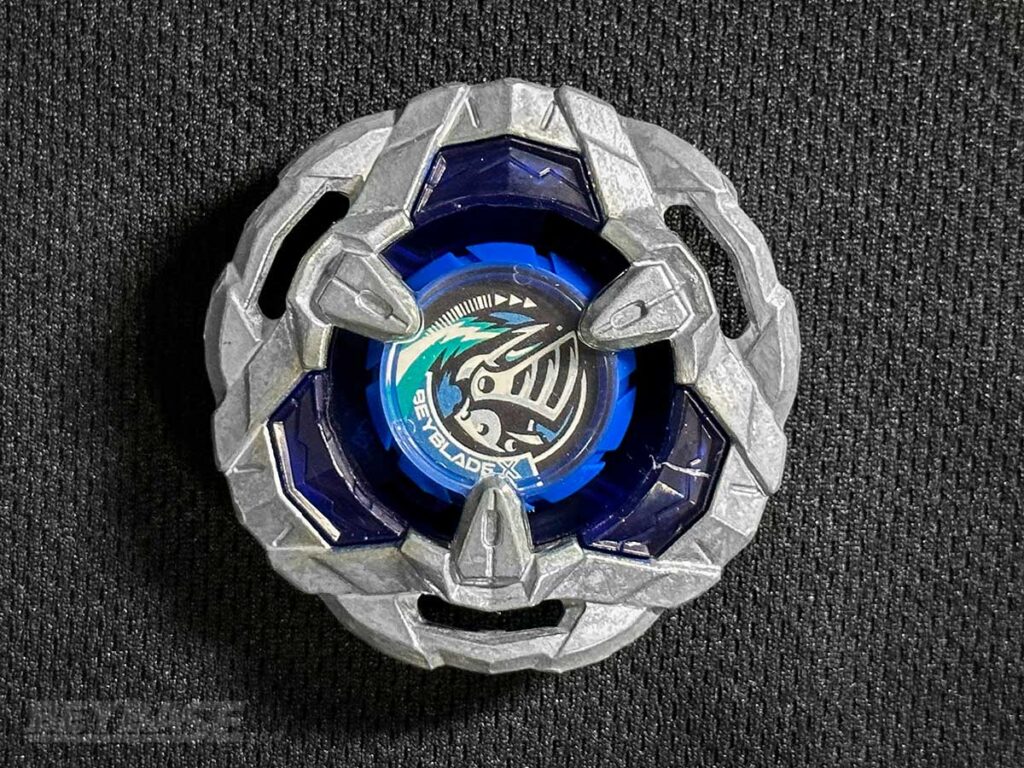
Benchmark: Dran Sword (worn) 3-60F vs. Knight Shield 5-60HN
- DS3-60F wins: 3 wins, 7 points (1 XF, 2 BF)
- KS5-60HN.wins: 7 wins, 7 points wins (7 OS)
- Flat Bit Win Percentage: 30%
- Flat Bit Points Percentage: 50%
- Mint Dran Dagger Blade, Mint Knight Shield Blade, Mint HN Bit
Dran Sword (worn) 3-60R vs. Knight Shield 5-60HN
- DS3-60R wins: 4 wins, 9 points (1 XF, 1 BF, 2 KO)
- KS5-60HN wins: 6 wins, 9 points wins (1 XF, 1 KO, 4 OS)
- Rush Bit Win Percentage: 40%
- Rush Bit Points Percentage: 50%
- Rush Bit tilt-launched at ~220 degree angle
- Mint Dran Dagger Blade, Mint Knight Shield Blade, Mint HN Bit
The reason why the Rush Bit combo was tilted rather than Flat launched is because it didn’t seem to lose as much stamina as the Flat Bit does when starting from a more passive place (at the center of the stadium). When tilting an aggressive combo it tends to start at the center, make contact with the opponent, and take a bit more time to properly align its Gears with the Xtreme Line and start going wild.
This normally amounts to a loss in stamina and serious hindrance to the Flat Bit’s ability to use the Xtreme Line at top speed from the get-go, making it usually an unfavourable launch style. With the Rush Bit this seemed to be less of an issue, allowing for the more passive start to be a viable strategy.
While it is expected for a worn Dran Sword to perform a bit poorly in this matchup it is clear that both Bits performed the same on a points-basis yet there was an edge win-wise towards Rush.
During play it seemed unclear that there was a technical difference between the two. Much of Rush’s “safety” in doing a tilted launch was washed away when the otherwise very controllable Rush went out of control along the Xtreme Line seemingly at random one match, heavily skewing points back to even in an otherwise favourable set of battles.
Overall, while the Flat Bit is a wild Bit that many are more accustomed to using, the Rush bit is a more controllable Bit that can also suffer from a wild streak, technically making it a bit tricker to master at times.
With the Flat Bit you go into the match expecting it to go all over the place but the Rush Bit tends to be a bit more passive when tilt-launched, giving a sense of security in a bit of calmness.
Seeing the Rush Bit go immediately onto the Xtreme Line using a launch that would otherwise see it remain passive for a second or two first comes as an unwanted surprise, and must be taken into consideration or mastered.
Let this serve as a caution and recommendation to get practice in with the Rush Bit to ensure the movement you expect is the movement you get 10/10 times, since the massive difference in behaviour can easily cost you a match.
Next we decided to see how Rush did into the generalist Hells Scythe on B, expecting great results given we started off with some pretty tough matches for it earlier:
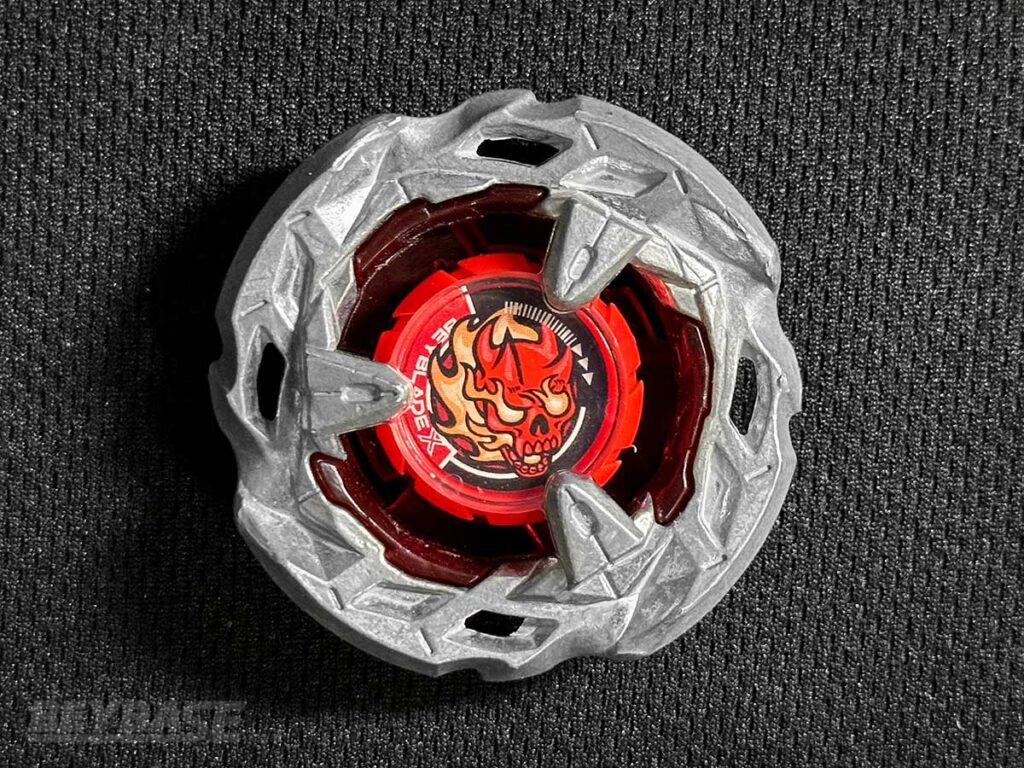
Dran Sword (worn) 3-60R vs. Hells Scythe 4-60B
- DS3-60R wins: 7 wins, 12 points (5 KO, 2 OS)
- HS4-60B.wins: 3 wins, 5 points (1 BF, 1 KO, 1 OS)
- Rush Bit Win Percentage: 70%
- Rush Bit Points Percentage: 71%
- Rush Bit tilt-launched at ~220 degree angle
- Worn Dran Sword Blade, Worn Hells Scythe Blade
These results were a bit on the surprising side as we would normally expect a bit of a worse performance from a worn Dran Sword. It is clear that ample speed around the Xtreme Line as well as the passive early start from tilting Rush Bit was effective.
It also seemed like the Rush Bit was able to last a bit longer than Flat would have in one match, securing an outspin because it was able to tilt over for a fraction of a second longer than Hells Scythe.
Because the height between Rush and Flat is the same, it may be a result of Rush’s thinner tip and shorter gears allowing for that very minor improvement to the combos procession that we weren’t used to seeing as much from Flat.
We mentioned earlier that it felt this way, and perhaps it will continue to hold true as time goes on and our experience with the Bit grows.
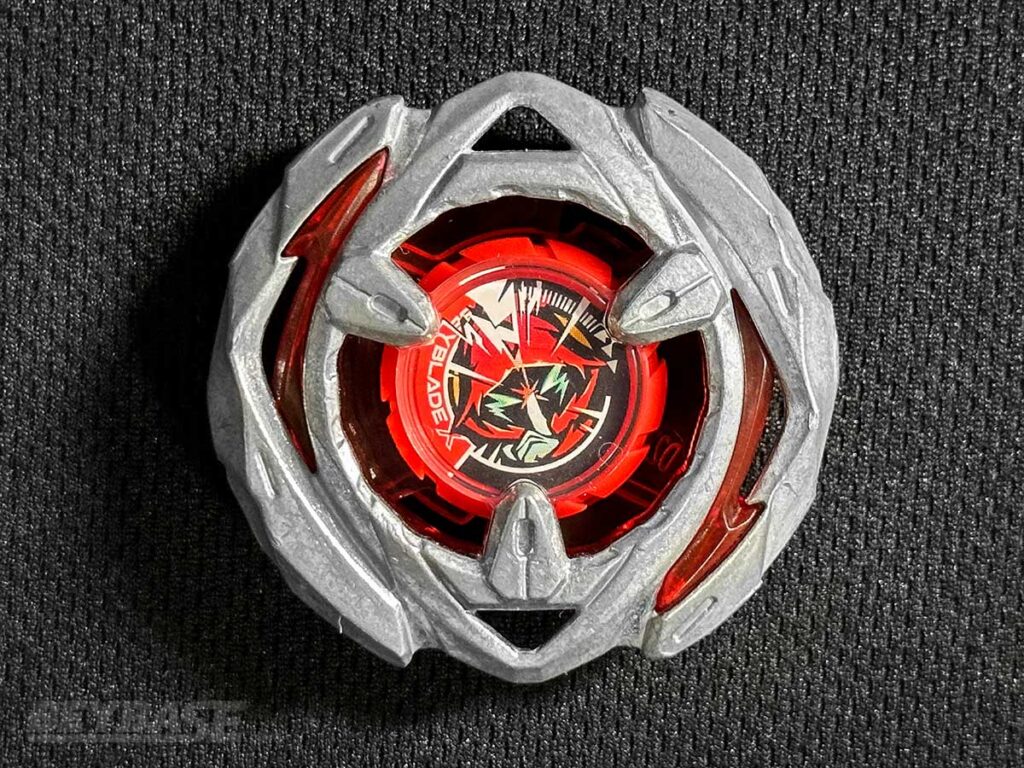
Dran Sword (worn) 3-60R vs. Wizard Arrow 5-60N
- DS3-60R wins: 4 wins, 8 points (4 KO)
- WA5-60HN.wins: 6 wins, 7 points (1 KO, 5 OS)
- Rush Bit Win Percentage: 40%
- Rush Bit Points Percentage: 53%
- Rush Bit tilt-launched at ~220 degree angle
- Worn Dran Sword Blade, Worn Wizard Arrow Blade
This was an interesting matchup that we decided to experiment with. While Wizard Arrow on Needle is not particularly common, it can be a decent enough counter to Attack types – especially a worn Dran Sword.
We decided to see how Rush would do, and unsurprisingly it did about as well as one would expect. The earlier hope we had that Dran Sword was performing better than normal thanks to Rush seems dashed.
Because it felt perhaps a little unfair we also tried it using Rush on its original Blade, Dran Dagger to see if there would be a meaningful difference and further support Rush Bit’s potential as a Flat alternative:
Dran Dagger 3-60R vs. Wizard Arrow 5-60N
- DD3-60R wins: 6 wins, 13 points (1 XF, 1 BF, 4 KO)
- WA5-60HN.wins: 4 wins, 4 points (4 OS)
- Rush Bit Win Percentage: 60%
- Rush Bit Points Percentage: 77%
- Rush Bit tilt-launched at ~220 degree angle
- Mint Dran Dagger Blade, Worn Wizard Arrow Blade
Here we saw astounding results, and surprisingly enough even more of a disparity between our worn Dran Sword Blade and the mint Dran Dagger Blade. In a way this may be a testament to neither part alone, but the power of the Dran Dagger Rush combination in unison.
The Verdict
The Rush Bit is an excellent Attack Bit. Rush has the required speed, endurance and unique qualities to earn itself a spot in any Attack Blader’s Deck.
Overall, save for one hiccup in testing, it is clear that the Rush Bit easily competes with the Flat Bit despite some small behavioural differences between the two. Pick the one your playstyle gravitates towards most, knowing Rush can afford a bit more passiveness to start while the Flat Bit is permanently in fifth gear.
Best Rush Bit Combo: Dran Sword 5-60R
How to make DS5-60R

-
Dran Sword Blade (1 of the following)
- BX-01 Dran Sword 3-60F
- BX-07 Start Dash Set – Dran Sword 3-60F (Special Ver.)
- BX-14 Random Booster Vol. 1 – 03: Dran Sword 3-80B
- BX-17 Battle Entry Set – Dran Sword 3-60F (Red Ver.)
- BX-22 Dran Sword 3-60F Entry Package
-
5-60 Ratchet (1 of the following)
-
Rush Bit
Should you buy the BX-21 Dran Dagger Deck Set?
The short answer is absolutely, it is a must-have provided you are an Attack oriented Blader. For those not interested at all in Attack it is not strictly necessary but highly recommended.
We have to highlight the meta relevance of attack in the current X metagame, though. The Attack subtype cannot be ignored by top players.
Overall this makes for an excellent beginner purchase as well, since it provided players with two very strong stock Attack combos as well as a balance/defense combo in Knight Shield. The resulting Deck is a powerful one if used correctly.
Frankly, the only thing missing to create a legitimate 10/10 rating for this set is a 3-60 or 5-60 Ratchet. Perhaps highlighting Takara-Tomy’s cunning, both of those Ratchets are found in the sister set, BX-21 Hells Chain Deck Set.
Final Score: 9.5/10Where to Buy BX-20 Dran Dagger Deck Set

Heads up: If you buy something through some of the links on this post, you won’t pay any extra, but I’ll get a small commission. This helps me keep things running. Thanks for your support!
What Do You Think of the BX-21 Dran Dagger Deck Set? Comment Below!
If you’re thinking of picking up the BX-21 Dran Dagger Deck Set or already have, comment below as we’d love to hear about your thoughts and testing experiences with it!
Article Credit
Article written by Dan. Direction, additional writing, testing, editing, and photos by Blader Kei.
Or become a BeyBase HQ member to get early article access and behind-the-scenes updates. Thank you!

